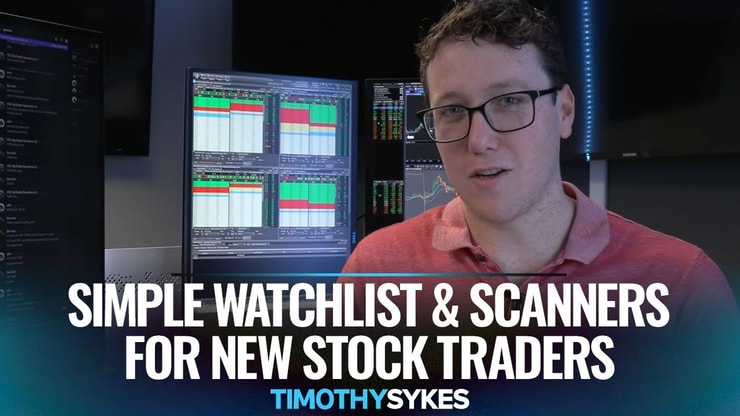The semiconductor industry is full of volatility, and that makes it one of the best places to find short-term trading opportunities. While most traders focus on large-cap chip stocks like Nvidia and AMD, semiconductor penny stocks can offer even bigger percentage moves. These low-priced stocks tend to attract traders looking for high-risk, high-reward plays.
Check out my AI penny stocks watchlist here!
Here are 10 semiconductor penny stocks that could provide major trading opportunities in 2025 based on sector trends, recent catalysts, and overall market momentum:
| Company | Ticker | Performance (YTD) |
|---|---|---|
| Pixelworks, Inc. | NASDAQ: PXLW | + 18.99% |
| POET Technologies Inc. | NASDAQ: POET | - 26.74% |
| Ideal Power Inc. | NASDAQ: IPWR | - 11.54% |
| SemiLEDs Corporation | NASDAQ: LEDS | + 10.45% |
| EMCORE Corporation | NASDAQ: EMKR | + 1.83% |
| Sequans Communications S.A. | NYSE: SQNS | - 9.38% |
| Valens Semiconductor Ltd. | NYSE: VLN | - 13.17% |
| Canaan Inc. | NASDAQ: CAN | - 17.57% |
| GCT Semiconductor, Inc. | NYSE: GCTS | + 2.65% |
| indie Semiconductor, Inc. | NASDAQ: INDI | - 1.78% |
Before you send in your orders, take note: I have NO plans to trade these stocks unless they fit my preferred setups. This is only a watchlist.
The best traders watch more than they trade. That’s what I’m trying to model here. Pay attention to the work that goes in, not the picks that come out.
Sign up for my NO-COST weekly watchlist to get my latest picks!
Table of Contents
- 1 Pixelworks, Inc. (NASDAQ: PXLW)
- 2 POET Technologies Inc. (NASDAQ: POET)
- 3 Ideal Power Inc. (NASDAQ: IPWR)
- 4 SemiLEDs Corporation (NASDAQ: LEDS)
- 5 EMCORE Corporation (NASDAQ: EMKR)
- 6 Sequans Communications S.A. (NYSE: SQNS)
- 7 Valens Semiconductor Ltd. (NYSE: VLN)
- 8 Canaan Inc. (NASDAQ: CAN)
- 9 GCT Semiconductor, Inc. (NYSE: GCTS)
- 10 indie Semiconductor, Inc. (NASDAQ: INDI)
- 11 Risks and Rewards of Investing in Semiconductor Penny Stocks
- 12 How to Choose the Best Semiconductor Penny Stock
- 13 Tips for Investing in Semiconductor Penny Stocks
- 14 Key Takeaways
- 15 Frequently Asked Questions
Pixelworks, Inc. (NASDAQ: PXLW)
Pixelworks develops visual processing chips used in mobile devices, gaming, and projectors. Recently, analysts have taken a bullish stance on the company, with multiple institutions issuing “buy” ratings.
Strong analyst support can increase attention on a stock, making it more likely to gain momentum. While ratings don’t guarantee long-term success, they can attract traders looking for short-term setups.
The stock has seen multiple price spikes in past years, often reacting to new product launches or industry announcements. Traders should watch for news catalysts and volume surges that could create short-term momentum opportunities. When trading stocks like this, I always look for a strong breakout pattern with high volume before making a move.
POET Technologies Inc. (NASDAQ: POET)
POET Technologies focuses on photonic integrated circuits (PICs) for AI, data centers, and high-speed computing. The company recently secured a manufacturing expansion deal with Globetronics in Malaysia to increase capacity for its optical engines.
This is the type of stock that can remain quiet for months and then suddenly explode with a triple-digit move in a single session. That’s why it’s important to track news and price action closely. The best traders don’t chase—they wait for the right setup and execute with discipline.
Ideal Power Inc. (NASDAQ: IPWR)
Ideal Power develops advanced power conversion technologies, including its patented B-TRAN™ bi-directional power switches and converters, which enhance efficiency in renewable energy systems, electric vehicles, and energy storage. The company collaborates with industry leaders like Diversified Technologies and has secured grants from entities such as the U.S. Department of Energy, reinforcing its role in next-generation energy solutions.
IPWR’s stock has shown historical volatility, with price jumps frequently aligning with catalysts like new patent approvals, partnership announcements, or broader renewable energy market trends. Traders should track news on policy shifts, product milestones, or sector-wide momentum, as well as technical signals like breakouts accompanied by surging volume. As with speculative tech stocks, combining catalyst timing with confirmation from volume spikes can help identify strategic entry points for short-term trades.
SemiLEDs Corporation (NASDAQ: LEDS)
SemiLEDs is a small-cap LED chip manufacturer that operates in the lighting and industrial applications market. The company’s stock has been a favorite of momentum traders in the past due to its history of massive price spikes.
This stock tends to trade with low liquidity until it catches a news-driven catalyst. Traders should be cautious and wait for confirmed breakout signals before jumping in. When it does move, the volatility can be extreme, making it a high-risk, high-reward play.
EMCORE Corporation (NASDAQ: EMKR)
The company recently agreed to a buyout deal with Velocity One, which brought it up to its current $3 level, just below where the buyout level was.
Government defense contracts can be a major catalyst for stocks like EMKR. If the company secures new funding or military contracts, expect a sharp move in the stock. These types of penny stocks can be unpredictable, so I always use tight risk management when trading them.
Sequans Communications S.A. (NYSE: SQNS)
Sequans specializes in 5G and IoT semiconductor solutions, positioning itself in a rapidly growing market. The company has been working on partnerships with telecom providers and device manufacturers, which could help drive future growth.
The company has an upcoming earnings report, which could serve as a major catalyst.
Earnings reports can create massive short-term trading opportunities. If Sequans delivers strong results or positive guidance, it could see increased attention from traders looking for momentum.
Valens Semiconductor Ltd. (NYSE: VLN)
Valens Semiconductor develops high-speed connectivity solutions for automotive, industrial, and artificial intelligence applications. The company is expanding its partnerships in the automotive industry, making it a potential trade for those watching electric vehicle trends.
The stock is still in its early growth stages, but its connection to AI and automotive industries could create price action in the near term. When trading these types of stocks, it’s important to react quickly to news catalysts before the momentum fades.
If you’re watching an EV support stock like VLN, you should also be keeping watch on other EV support sectors. Here’s a list of the best battery stocks to watch.
Canaan Inc. (NASDAQ: CAN)
Canaan is a blockchain-focused semiconductor company that designs chips for cryptocurrency mining. This stock moves with the cryptocurrency market, making it highly volatile.
Crypto-related stocks often experience wild swings, and CAN is no exception. Traders should be aware that these moves are heavily influenced by Bitcoin prices. If Bitcoin runs, CAN could follow, but if crypto crashes, so will this stock.
Check out my crypto penny stocks watchlist here!
If Canaan successfully pivots toward AI-focused semiconductor development, it could regain attention from traders.
GCT Semiconductor, Inc. (NYSE: GCTS)
GCT Semiconductor develops 4G and 5G wireless chips used in mobile devices and telecom infrastructure. The stock has been relatively quiet but could see movement if new telecom contracts or partnerships are announced.
Wireless technology stocks tend to spike when major industry deals are announced. Traders should watch for volume increases and breakout patterns before taking a position.

indie Semiconductor, Inc. (NASDAQ: INDI)
Indie Semiconductor focuses on automotive and AI-driven semiconductor technology, making it a potential trade in the growing self-driving and electric vehicle sectors. The company has secured deals with major automakers, which could drive interest in the stock.
This stock is a bit larger than the typical penny stock, but it still moves with volatility. With AI and automotive tech continuing to expand, traders should watch for industry news that could impact price action.
Risks and Rewards of Investing in Semiconductor Penny Stocks
Semiconductor penny stocks offer some of the biggest trading opportunities, but they also come with serious risks. The companies behind these stocks are often unproven, struggling with revenue, or dependent on outside funding to survive. That means these stocks can experience massive gains but also catastrophic losses.
For traders, the key is knowing when to get in and when to get out. Volatility can be a trader’s best friend, but holding onto a bad position can wipe out your account. I’ve seen traders turn a small account into six figures by capitalizing on penny stock momentum, but I’ve also seen them lose it all by getting greedy.
Semiconductor penny stocks can swing fast—big wins, big losses. Supply chain issues, market demand, and tech advancements all hit these stocks hard. But they also move with major trends like AI, EVs, and energy storage. If you’re watching semiconductors, it makes sense to follow bigger, established chip stocks too. They set the direction for the market and offer more stability. Here’s a list of the best semiconductor stocks right now.
How to Choose the Best Semiconductor Penny Stock
When trading semiconductor penny stocks, the goal is to find stocks with the best potential for short-term price movement. This means looking beyond hype and focusing on key indicators like share price trends, market cap, trading volume, and recent news catalysts. Stocks that are breaking out on high volume tend to offer better short-term returns than those with low liquidity.
Analyzing a company’s financial health is still important, even for short-term trades. While most semiconductor penny stocks won’t have strong fundamentals, reviewing an analyst’s recommendation, revenue growth, and share structure can help identify which companies have enough momentum to sustain a price move. A stock with constant share dilution is a red flag—these companies raise capital by issuing more shares, which can crush the stock price over time.
From years of trading experience, I’ve seen how important it is to filter out the noise. Many articles and financial content platforms will hype up penny stocks based on speculative news, but real traders focus on what actually moves the price. Understanding how to read price action, volume, and market sentiment will always be more valuable than blindly following financial news.
Once you’ve figured that out, it’s time to build a watchlist:
Tips for Investing in Semiconductor Penny Stocks
Let’s be clear: you should never invest in semiconductor penny stocks.
These stocks are not stable, and 99% of them won’t succeed in the long run. Investing implies a long-term approach, but penny stocks lack the consistency in sales, profitability, and financial stability needed to justify holding them over time. Instead, they are best used for short-term trading opportunities based on volatility and momentum.
Many semiconductor companies in this sector operate with low revenue, high cash burn, and uncertain growth potential. While a handful might turn into successful businesses, the majority will dilute their shares, struggle with production challenges, or simply fade away. The stock market is full of failed penny stocks that once had exciting technology but couldn’t translate it into sustainable profitability.
If you want long-term exposure to the semiconductor sector, ETFs and established companies with strong valuations and analyst ratings are a better choice. Investing in stable funds or semiconductor stocks with proven results gives you the opportunity to participate in the industry’s growth without the extreme risks associated with low-market-cap stocks.
Key Takeaways
- Never invest in semiconductor penny stocks—trade them for short-term momentum instead.
- Most semiconductor penny stocks will fail due to financial instability, share dilution, or lack of demand for their products and services.
- High volatility creates opportunities for short-term gains, but risk management is crucial.
- Always do your own research before trading any stock. Media hype and newsletters can influence stock price movements, but that doesn’t mean a stock is a good trade.
Semiconductor penny stocks can provide short-term trading opportunities due to high volatility and market speculation. These stocks are not long-term investments, and traders should focus on short-term price action rather than fundamentals. Risk management is critical, as penny stocks can lose value quickly.
This is a market tailor-made for traders who are prepared. Semiconductor penny stocks thrive on volatility, but it’s up to you to capitalize on it. Stick to your plan, manage your risk, and don’t let FOMO drive your decisions.
These opportunities are fast and unpredictable, but with the right strategy, you can make them work for you.
I recommend that you pay close attention to the first days of this possibly historic bull market.
If you want to know what I’m looking for—check out my free webinar here!
Frequently Asked Questions
Are semiconductor penny stocks a good investment?
Semiconductor penny stocks are not good investments—they are short-term trading vehicles. Many traders get caught up in speculative stories about breakthrough semiconductors, but the reality is that most of these companies never reach profitability. Their low market cap and constant need for funding make them risky long-term holds.
That being said, these stocks can offer strong short-term returns for traders who understand momentum and technical analysis. Share price volatility creates opportunities, but it also means that gains can disappear just as quickly. If you want exposure to semiconductors as an investment, a diversified portfolio with ETFs or larger semiconductor stocks is a smarter choice.
Can semiconductor penny stocks grow into large-cap stocks?
While it’s possible for a semiconductor penny stock to grow into a large-cap stock, it is extremely rare. Most small semiconductor companies lack the financial resources, market demand, or technological edge to scale into industry leaders. The semiconductor sector is highly competitive, with major players dominating the market.
Occasionally, a smaller company will develop a product that catches the attention of larger firms, leading to acquisitions or rapid share price appreciation. However, for every success story, there are countless failed companies that never delivered results. Traders should focus on short-term price action rather than hoping for long-term growth.
More Breaking News
- GRAB Rolls Higher: Is This Uplift Sustainable?
- MARA Stock Surges: What’s Fueling the Momentum?
- Hecla Mining Faces Downgrade Amidst Market Uncertainties
What is the minimum amount required to invest in semiconductor penny stocks?
The minimum investment depends on the stock’s share price and your broker’s requirements. Some semiconductor penny stocks trade for under $1 per share, meaning you could start with as little as $50 or $100. Many brokers also offer fractional shares, giving traders flexibility when entering positions.
However, just because a stock has a low entry price doesn’t mean it’s a good trade. Penny stocks are high-risk, and while they can provide fast returns, they can also drop quickly. Before putting any money into these stocks, traders should focus on risk management, position sizing, and exit strategies to protect their capital.
Do hedge funds invest in semiconductor penny stocks?
Hedge funds typically avoid semiconductor penny stocks because these stocks lack the liquidity and financial stability needed for large institutional investments. Most hedge funds focus on established semiconductor companies with strong financial systems, predictable revenue streams, and scalable business models. Penny stocks, by contrast, often have inconsistent financial results, making them unattractive for long-term institutional strategies.
That said, some hedge funds specializing in high-risk, high-reward trades may take short-term positions in penny stocks, especially when there’s momentum or news-driven volatility. Analysts within these firms may track speculative semiconductor plays, but their involvement is usually limited compared to retail investors looking for short-term gains.
For individual investors, the lack of hedge fund involvement can be a red flag. If professional finance experts and analysts avoid a stock, it’s usually because the risks outweigh the potential returns. Traders should always look at credible sources of information before making a trade, rather than relying on hype or speculation.










Leave a reply